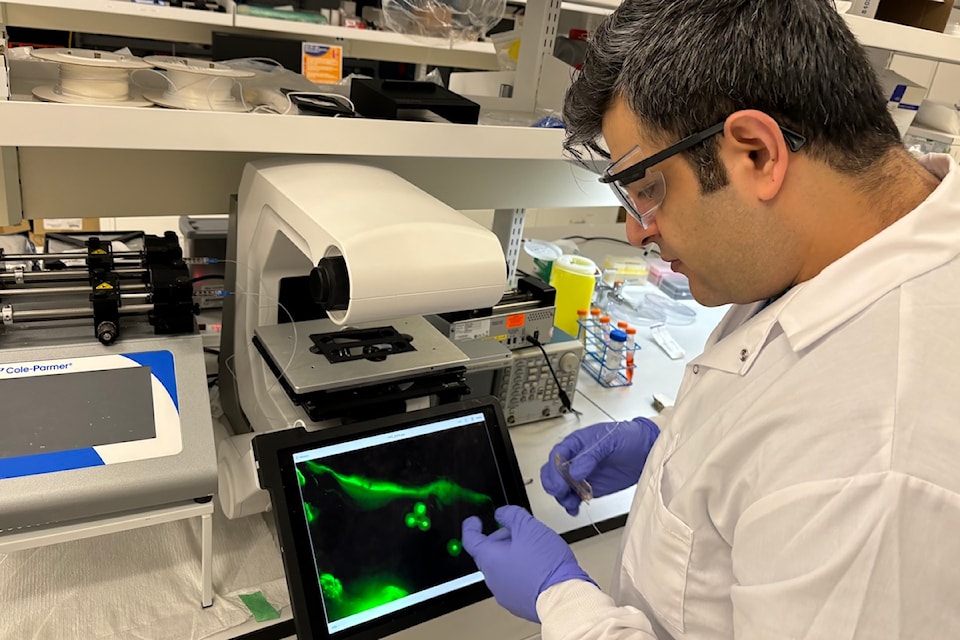UVic PhD candidate Abbas Motalebizadeh has created a new way to test water for microplastics.
Found in everything from food to makeup, microplastics are fragments of degraded plastics. Though scientists have yet to prove the how these tiny bits affect human health, according to Motalebizadeh, when consumed, they may contribute to the development of diseases and disorders.
“Microplastics can accumulate in the human body, including organs and tissues, and have even been detected in human blood,” he said. “[They] can carry toxic chemicals, which may increase the risk of developing diseases like cancer or neurological disorders."
The way Motalebizadeh's kits identify microplastics is fairly simple. Using a syringe or pipette, users inject water into a small device about the size of a COVID test. Within, the water travels through a series of tiny channels, mixing with reagents – substances used to trigger chemical reactions – and then changes colour.
"Red is good," said Motalebizadeh, who also plans to offer kits for commercial and scientific uses. "If it's light red or purple or blue or even clear, it means that there are microplastics in our sample."
Microplastics testing already exists, but it is expensive and requires users to send water samples to a lab. However, Motalebizadeh's kits, which he plans to start selling this summer, provide results in minutes and will only cost $15.
Katherine Elvira, an associate professor of chemistry at UVic, thinks they could prove useful.
"Hopefully easy-to-use test kits like these will make it easier to see where microplastics are," she said. "Then we will be able to figure out ways to remove them from water, or just not introduce them into water in the first place."
Motalebizadeh has already used his kits to test water in Greater Victoria. For example, a sample from the Inner Harbour – specifically near the Boom + Batten restaurant – had 35 times more microplastics than bottled water, according to the scientist. Polystyrene food containers, bits of fishing nets and flecks of boat paint all presented themselves in the sample. He also tested the water at Gonzalez Beach, as well as from UVic taps, both of which contained microplastics.
Though Motalebizadeh only started designing these kits in 2022, he has long had a desire to help identify contaminants in water sources.
"My mom was my motivation," he said. "She had some contaminated water when she was younger and it affected her all her life."
The scientist added that hopes these kits can help others like his mom keep track of what they're drinking and seek out the cleanest water possible.



